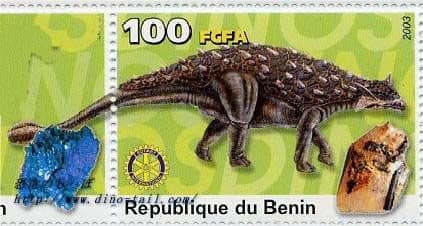About Ankylosaurus
| Scientific Name (Genus) | Ankylosaurus |
| Meaning of Name |
Fused lizard
ankylōsis (fused) [Greek] - saurus (lizard) [Greek] |
| Classification | Ornithischia, Thyreophora, Ankylosauridae |
| Total Length | Approx. 6-8m |
| Diet | Herbivorous |
| Period | Late Cretaceous (approx. 68-66 million years ago) |
| Species Name | Ankylosaurus magniventris |
| Year of Paper Publication | 1908 |
| Genus Name Publication | Brown, B.; Kaisen, P. C. (1908). The Ankylosauridae, a new family of armored dinosaurs from the Upper Cretaceous. Bulletin of the AMNH, 24. |
The Famous Yet Mysterious "Living Fortress"
Ankylosaurus is one of the most famous dinosaurs, synonymous with the term "armored dinosaur," and a hallmark of the end of the Cretaceous period. Its name means "fused lizard," derived from the heavy armor that covered its entire body.
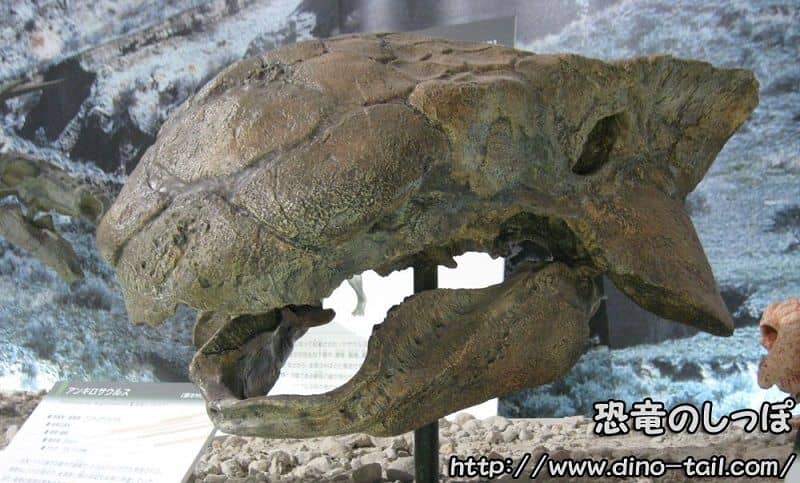
However, contrary to its fame, a complete, perfectly preserved skeleton has yet to be discovered. The image of Ankylosaurus we know today is a reconstruction based on fragmentary fossils such as skulls, armor plates, and tail clubs, supplemented by information from more complete skeletons of close relatives like Euoplocephalus.
The scarcity of its fossils suggests that, unlike more widespread contemporaries like Edmontosaurus and Triceratops, Ankylosaurus may not have been broadly adapted, possibly relying on specific environments or particular plants.
It is believed that Ankylosaurus fed on low-growing soft plants like ferns.
The defense of Ankylosaurus was thorough. In addition to the various large and small bony plates (osteoderms) covering its back and head, it even had shutter-like bony armor on its eyelids . This allowed it to protect its vulnerable eyes.
Furthermore, CT scans of its skull have revealed an incredibly complex and convoluted nasal passage. This has led to interesting theories that this structure functioned as an "air conditioner" to warm and moisten inhaled air, or as a "resonance chamber" to produce loud calls.
The Role of the Tail Club
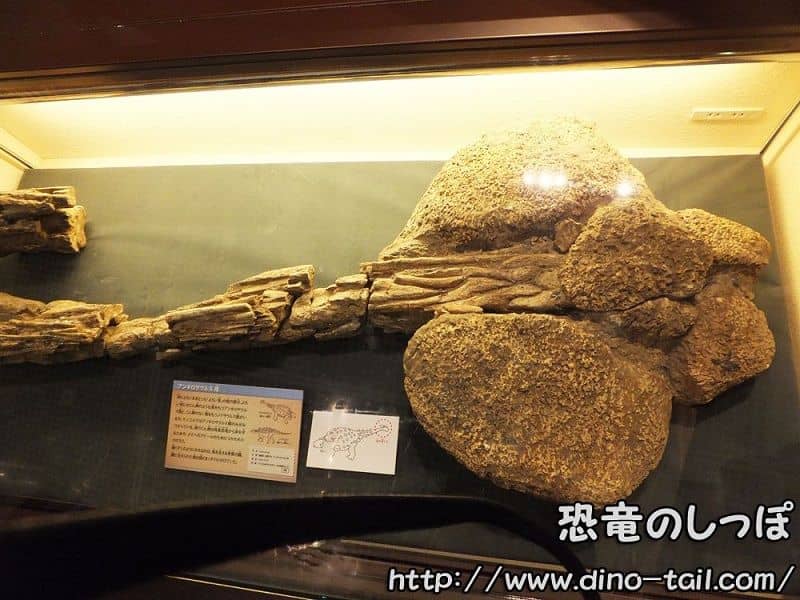
The greatest weapon of Ankylosaurus was the giant bony mass at the end of its tail, commonly known as the "tail club." This hammer was formed from two large osteoderms and a smaller one in the center, each shaped like a semicircle. The bones in the latter half of the tail were fused together to form a stiff rod, serving as the "handle" for swinging the club. Meanwhile, the muscles at the base of the tail were very flexible, allowing it to swing the hammer from side to side with powerful speed.
Hypothesis 1: Defensive Weapon
According to a 2009 study, a single strike from this hammer could reach a pressure of 364 to 718 MPa (megapascals). This is equivalent to about 50 times the water pressure of a pressure washer and was destructive enough to shatter the leg bones of a contemporary predator like Tyrannosaurus rex. Therefore, it was long believed that the tail club was used as a defensive weapon against large predators.
Hypothesis 2: Tool for Intraspecific Combat
In recent years, the theory that the primary reason for the evolution of the tail club was for intraspecific combat (fighting among its own kind) over territory or mates has gained traction. The strongest evidence supporting this hypothesis comes from an exceptionally well-preserved fossil of the ankylosaurid Zuul crurivastator.
The Zuul specimen showed multiple injuries on the osteoderms (spikes) on the sides of its body, particularly in the hip region, which had been fractured and subsequently healed during its lifetime. These injuries were not randomly distributed across the body but were concentrated in specific areas. This pattern of concentrated wounds is difficult to explain as the result of random attacks by a predator and is more easily understood as the result of two ankylosaurs standing side-by-side and striking each other with their tail clubs.
Indirect evidence also supports the "intraspecific combat tool" theory. For example, nodosaurids, which coexisted with the same predators, did not evolve tail clubs. This fact suggests that a club may not have been essential for defense against predators.
It is highly likely that a tool that evolved for intraspecific combat was secondarily used for defense against predators, so the two hypotheses are not mutually exclusive. It is considered probable that the tail club served both roles.
Diet of Ankylosaurus, as Revealed by Its Teeth
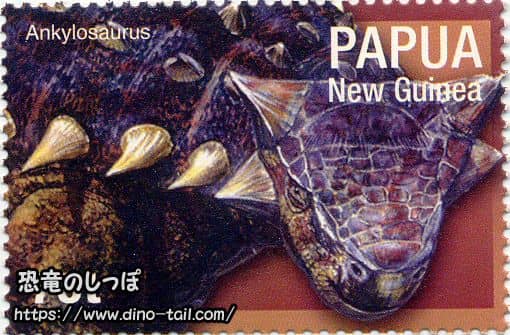
Ankylosaurus was a "low-browser," feeding on plants close to the ground.
Its teeth were small and leaf-shaped, and it lacked the dental batteries found in hadrosaurs and ceratopsians, suggesting it ate relatively soft vegetation.
Plant fossils from the Hell Creek Formation, where Ankylosaurus is found, include over 11 types of ferns, cycads, and a vast array of flowering plants, including members of the rose and laurel families. A 2017 study estimated that it needed to consume about 60 kg of ferns per day.
Recent studies have used techniques to analyze microscopic scratches (microwear) left on the tooth surfaces to infer the specific diet and jaw movements of dinosaurs.
A study on the related ankylosaurid Jinyunpelta showed a combination of vertical and horizontal scratches on its teeth, indicating a complex chewing motion that involved both closing the jaw and pulling it backward. This suggests that ankylosaurids did not just tear off and swallow plants whole, but rather ground them up before ingestion.
Publication and the Description of the Tail Club
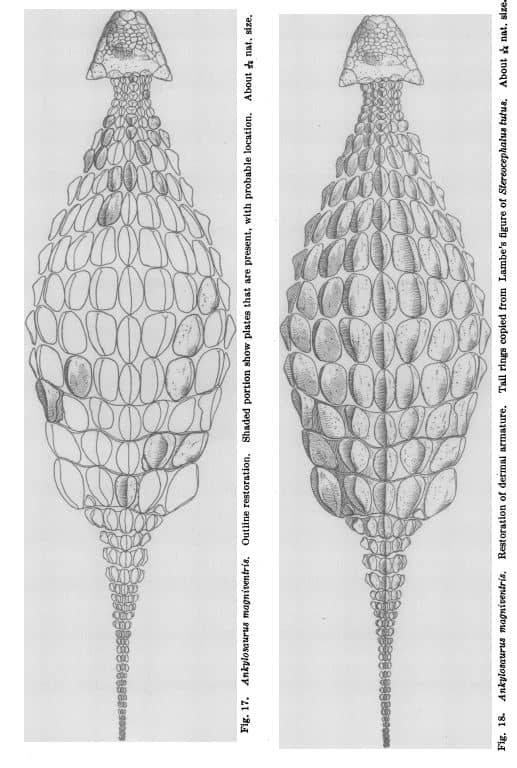
The tail club was not included in the initial description.
Source: Brown, B.; Kaisen, P. C. (1908). The Ankylosauridae...
In 1906, an expedition from the American Museum of Natural History led by paleontologist Barnum Brown discovered fossil specimens including the top of a skull, teeth, vertebrae, ribs, and armor in the Hell Creek Formation of Montana, USA. Based on this collection, cataloged as specimen AMNH 5895, the new genus and species Ankylosaurus magniventris was described in 1908.
In this paper, the characteristic tail club of Ankylosaurus was not reconstructed, as the end of the tail was still unknown at the time.
In 1910, Barnum Brown discovered ribs, limbs, armor, and a tail club in the Scollard Formation of Alberta, Canada. Based on these specimens, known as AMNH 5214, the bony tail club was described for the first time.
In 1947, fossil collector Charles M. Sternberg unearthed an Ankylosaurus skull (specimen CMN 8880), which has since become one of the most famous specimens, about 1 km north of Barnum Brown's 1910 discovery site.
The "Anguirus" of the Godzilla Film Series
Ankylosaurus also served as the model for "Anguirus," a monster featured in the Godzilla film series. In the movie's lore, Anguirus is an Ankylosaurus that was mutated and brought back to life by hydrogen bomb testing. It first appeared in the 1955 film "Godzilla Raids Again" and holds a special place in the series' history as "the first monster Godzilla ever fought on screen." While initially appearing as Godzilla's foe, in later Showa-era films, Anguirus was reintroduced as Godzilla's reliable "partner and ally," a character shift that is significant to fans, as they fought together for the peace of the Earth.
While the real Ankylosaurus was about 6-8 meters long, the first Anguirus in the Godzilla series reached a length of 100 meters.
Ankylosaurus Stamp & Fossil Gallery
